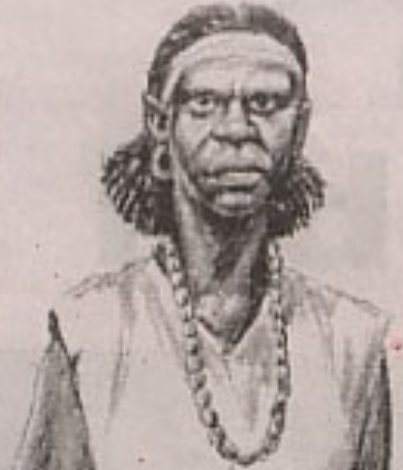By Owei Lakemfa
Carlota Lukumi, a Yoruba from Nigeria was about ten when slave raiders abducted her about two hundred years ago. She was one of the approximately 12.5 Africans abducted. She survived the dehumanizing Atlantic Ocean passage into slavery in which at least 2.5 million people died. She was sold into slavery to work in the sugar and cotton plantations in the Cuban Province of Matanzas.
As in almost all cases, her original names are lost as she was fitted with a new name, Carlota. Her surname, Lukumi came from the habit of Yoruba slaves, in realisation of their kinship, calling themselves ‘Olukumi’ meaning my close friend. This is very much like the international Argentine doctor, Ernesto Guevera, refering to himself as ‘Che’ (Buddy) and that becoming part of his name.
Over 600, 000 slaves were brought to Cuba in the 19th Century and put to inhuman, back- breaking work in the fields. The Spanish colonialists treated the slaves as beasts of burden. Their living conditions were quite harsh and some of the slaves thought the best option was the overthrow of the slave masters who were also the Spanish colonialists. Uprisings such as these are quite bloody and brutal and in almost all cases, associated with masculinity. But Carlota and and another woman of African descent, Fermnina, decided to lead a revolution to overthrow the system. They formed a triumvirate with another African slave, Evaristo and began mobilization in July and August, 1843.
With the Triunvirato and Acana mills as base, they employed the use of talking drums which a number of slaves had taught themselves. The slave-owners assumed the talking drums were means of the slaves reminding themselves of their ancestors, whereas they were war drums.
Unfortunately, part of the plan leaked and Fermina was exposed as a rebel planning insurgency. On August 2, she was arrested, tortured and detained. But the slave masters did not realise this was just the tip of the iceberg and that the insurgency, co-ordinated by Carlota was rumbling below like a volcano.
Three months later, on November 3, the insurgents led by Carlota moved from their Triunvirato Mill base to Acana Mill where they liberated Fermina and freed the slaves.
The uprising fully started on Sunday, November 5. 1943 at 8pm when Carlota burned down the places used for torture and detention, the home and the mill of the slave master. With sharpened machetes, she and her followers attacked the overseers and their assistants, slaying them. Some witnesses said Carlota, personally seized and slew her overseer’s daughter. Within hours, the insurgents had toppled the Mayor of Matanzas, Julian Luis Alfonso Sole who was also the owner of the local sugar mill. They also overran five plantations.
It was a very brutal uprising with both sides taking no prisoners. When Carlota was captured, she was quickly put to death on November 6, 1843. It is not clear how she was executed, but a popular claim by witnesses was that: “The repressive forces tied her to horses sent to run in opposite directions in order to destroy her body completely so that she would be unrecognizable forever.”
Carlota’s early capture and execution, rather than dampen the spirits of the insurgents, galvanized them into greater action. While she led the full insurgency for just one day, the revolt went on for one year; the largest against slave owners in Cuba.
Fermina and seven others were shot in March 1844. That year became known as the ‘Year of the Lashes’ because the angry slave owners and the Spanish armed forces massacred many Cubans of African ancestry irrespective of gender and status; slaves and freed men and women.
The uprising resonated internationally. Some days into the rebellion, an American warship, a Navy corvette, the Vandalia, docked in Havana. Its commander, Rear-Admiral Chauncey brought a solidarity letter to Leopold O’Donnell, the Captain General of Cuba offering American aid to crush the “Afro-Cuban” rebellion. Mr. Campbell, the U.S. Consul in Havana accompanied Rear-Admiral Chauncey to the official ceremony where the letter was presented. This reveals that as far back as the 1880s before the 1844-45 Berlin Conference where Africa was portioned into colonies, the Western Europeans and Americans had being working together to dominate the world. This was also evident in their support of Apartheid South Africa in Angola, Namibia and South Africa. It is still being played out today in the Russo-Ukrainian War.
The Carlota Uprising coming after the August 22, 1791 –January 1, 1804 Haitian Revolution in which slaves took on the colonialists plus the British and French armies, snatched victory, freed all slaves and declared independence, led to the unravelling of slave and colonial systems in the 19th century.
She became not just a symbol of the strength of the Cuban woman, but also one of resistance and resilience.
When Apartheid South Africa, backed by the West, invaded Angola in 1974, President Agostinho Neto on November 3, sent an SOS message to Cuba. The positive response came two days later: “The Communist Party of Cuba reached its decision without wavering.” The Cubans choice of November 5 to respond to the Angolan request, was symbolic as it reminded them of the November 5, 1883 day Carlota began her revolt. For them, it was time for Cuba to show its gratitude for the fundamental roles Cubans of African ancestry like Carlota and General Antonio Maceo, played in their liberation. Maceo, famously known as “The Bronz Titan” on account of his skin and valour in war, was the second-in-command of the Cuban army of liberation from colonial rule.
As Cuba poured tens of thousands of soldiers into Africa to stop the march of Apartheid in the continent including its invasion of various African states, its then leader, Fidel Castro, named it ‘Operación Carlota’ (Operation Carlota) in honour of Carlota Lukumi. The Cubans decisive military victory over the Apartheid Armed Forces not only forced the racists out of Angola, but also led to the independence of Namibia and South Africa.
With Operation Carlota, the Cubans linked not just their ancestral past with Africa, but also the ideals of the Cuban Revolution with the total liberation of Africa.
In 1991 as part of the UNESCO Slave Route Project, a memorial in honour of Carlota and the heroic slaves who fought for freedom, was erected at the site of the Triunvirato plantation where the revolt started.
In 2015, the memorial site was venue of the 40th Commemoration of ‘Operation Carlota.’ Carlota Lukumi seemed to have lived through the last three centuries; as leader of the 19th Century Slave uprising, in the UNESCO slave memorial of the last century and in the 40th Commemoration of Operation Carlota in the 21st Century.
Dear readers, we really need your support to keep on serving you with authoritative, truthful, and juicy stories everyday. For your support, please reach out to the editor @gavelinternational66@gmail.com

